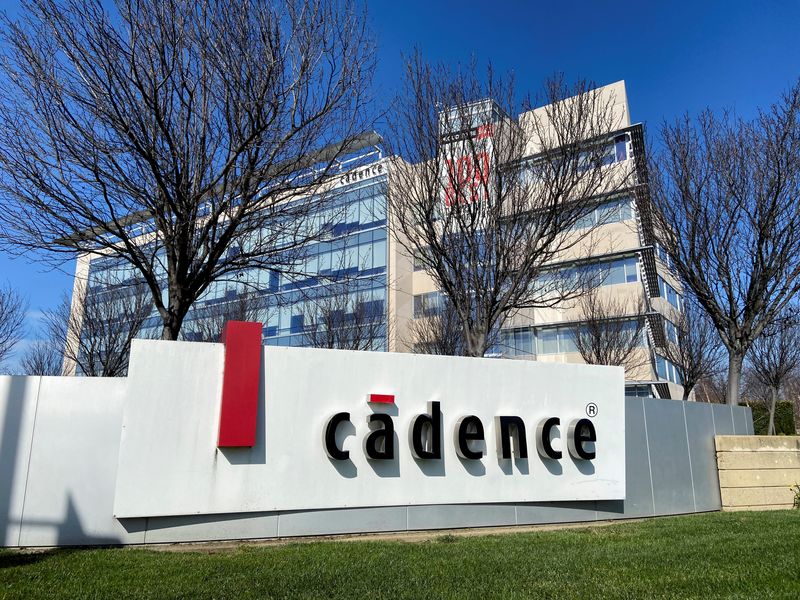

© Reuters. The logo of Cadence Design Systems is painted outside the company’s offices on January 31, 2020 in San Jose, California, US. Reuters/Stephen Nellis
by Tanya Jain and Stephen Nellis
(Reuters) – Cadence Design Systems Inc raised its full-year revenue forecast on Monday to slightly above Wall Street’s estimate, as growth in artificial intelligence (AI) innovation drives demand for custom semiconductor design.
Demand for the software used to design chips has grown even in the midst of a cyclical downturn for the industry as chip makers and tech giants like Alphabet (NASDAQ:) are racing to make their own semiconductors needed for AI processing.
But the midpoint of the company’s current quarter forecast was slightly below analyst estimates, sending shares down 4.4% to $230.60 in after-hours trading.
Chip designers such as Nvidia (NASDAQ: ), Arm, and Advanced Micro Devices (NASDAQ: ) also use Cadence’s design tools to develop semiconductors used in both handheld devices and servers that process data for AI.
Cadence forecast full-year revenue in the range of $4.05 billion to $4.09 billion, according to Refinitiv data, well above analysts’ average estimate of $4.06 billion. The company’s earlier estimate was $ 4.03 billion to $ 4.07 billion.
It expects adjusted earnings per share for 2023 to be between $5.05 and $5.11, beating expectations of $5.03 per share.
Revenue for the quarter ended June 30 was $976.6 million, topping estimates of $974.9 million. But the company gave a revenue forecast of $995.5 million for the current quarter, falling short of Refinitiv’s estimate of $1.01 billion.
Like its rival Synopsis (NASDAQ: ) Inc., Cadence is hoping to benefit from AI in at least two ways: first, by providing tools for designing chips for AI; And second, by adding AI to its own software to help with the complex process of designing the chips.
Chief executive Anirudh Devgan said one of the company’s big customers recently used its AI software to improve chip power efficiency. On a conference call with analysts, Devgan said more customers are adopting those AI tools.
“It will take some time, which is part of the natural process of trying out and deploying new technologies,” Devgan said.